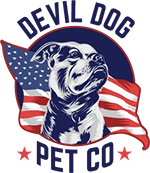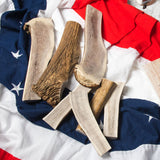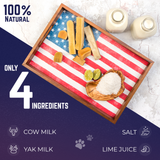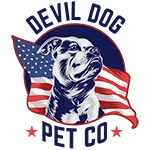Key Takeaways
- Elk burgers are made from lean wild game that results in juicy, protein-rich patties.
- They provide 25% more protein compared to traditional beef burgers.
- Elk burgers contain 50% less fat than beef, making them a healthier option.
- These burgers offer superior flavor without sacrificing nutrition.
- Elk burgers are ideal for health-conscious grill masters seeking tasty alternatives.
Table of Contents
- Elk Meat 101, What Sets It Apart
- Why Choose Elk for Your Burger, Benefits Beyond Taste
- Prepping for Success, Getting Elk Meat Ready
- Step-By-Step, How to Cook Perfect Elk Burgers
- The Elk Burger Build, Toppings and Bun Choices
- Comparing Elk Burgers and the Competition
- Solving the Big Problems, Expert Fixes to Elk Burger Challenges
- Storage, Meal Prep, and Leftovers
The Ultimate Guide to Elk Burger Recipes
Elk burger recipes transform lean wild game into juicy, protein-packed patties that outperform traditional beef in both nutrition and flavor. These premium burgers deliver 25% more protein with 50% less fat than beef, making them the tactical choice for health-conscious grill masters who refuse to compromise on taste.
The key to exceptional elk burgers lies in understanding the meat's lean nature and compensating with proper fat ratios, precise cooking techniques, and strategic seasoning. Master these fundamentals, and you'll create restaurant-quality burgers that showcase elk's naturally sweet, mild flavor without the gamey aftertaste that plagues poorly prepared wild game.
If you're a fan of elk-based recipes, you might also appreciate the Extra Large (XL) Whole Elk Antler Official Dog Chew for your canine companion, or consider the Medium Whole Elk Antler Dog Chew as a healthy treat option.
Elk Meat 101, What Sets It Apart
What is an Elk Burger?
An elk burger is ground elk meat formed into patties and cooked like traditional beef burgers. Elk, North America's largest deer species, produces meat that's naturally lean, high in protein, and carries a subtle sweetness that distinguishes it from both beef and other wild game.
Elk vs. Beef: The Lay of the Land
Elk meat contains roughly 164 calories per 4-ounce serving compared to beef's 250 calories, while delivering 34 grams of protein versus beef's 28 grams. The fat content tells an even more dramatic story, elk contains just 2 grams of fat per serving, while ground beef (80/20) packs 17 grams.
| Nutrient (per 4 oz) | Elk | Ground Beef (80/20) | Difference |
|---|---|---|---|
| Calories | 164 | 250 | -86 calories |
| Protein | 34g | 28g | +6g protein |
| Fat | 2g | 17g | -15g fat |
| Saturated Fat | 0.8g | 7g | -6.2g sat fat |
Wild Game Status
Elk qualifies as wild game whether ranch-raised or truly wild-harvested, meaning the animals graze naturally without grain finishing. This diet produces meat with higher omega-3 fatty acids and lower inflammatory omega-6 ratios compared to corn-fed cattle. The result is cleaner-tasting meat that requires different cooking approaches to maximize tenderness and flavor.
Sourcing with Standards
Quality elk comes from reputable ranches or licensed wild game processors who handle the meat from field to freezer with strict temperature control. Look for USDA-inspected facilities and avoid meat that's been frozen for more than six months. Fresh elk should have a deep red color with minimal odor, any strong "gamey" smell indicates poor handling or age.
Why Choose Elk for Your Burger, Benefits Beyond Taste

Nutritional Advantages
Elk meat delivers exceptional nutritional density with 7 grams of complete protein per ounce while containing zero carbohydrates. The mineral profile includes 15% daily value of iron and 25% of zinc per serving, critical nutrients often deficient in modern diets. Elk also provides significant B-vitamins, particularly B12 and niacin, supporting energy metabolism and nervous system function.
Nutritional Powerhouse: Elk contains 3x more iron than chicken, 2x more zinc than beef, and provides all essential amino acids with 90% less saturated fat than traditional ground beef.
Flavor Profile
Properly handled elk tastes remarkably similar to lean beef with subtle sweet undertones and zero "gamey" flavor. The meat's clean taste comes from the animal's natural diet of grasses, forbs, and browse rather than processed feed. Unlike venison, which can carry stronger wild flavors, elk's mild profile makes it an ideal gateway meat for those new to wild game.
Sustainability & Ethics
Ranch-raised elk requires significantly less water and feed than cattle while producing lower greenhouse gas emissions per pound of protein. These animals thrive on marginal rangeland unsuitable for crops, making elk ranching a sustainable land use practice. Additionally, elk ranches often support wildlife habitat conservation, creating win-win scenarios for both agriculture and ecosystem health.
Prepping for Success, Getting Elk Meat Ready
Understanding Elk's Lean Texture
Elk's 2% fat content means traditional burger cooking methods will produce dry, tough results. The lack of intramuscular fat (marbling) that keeps beef burgers juicy requires strategic fat addition and precise temperature control. Without proper preparation, elk's lean muscle fibers contract aggressively during cooking, squeezing out moisture and creating a dense, chewy texture.
Fat Matters: How & Why to Add It (with Exact Ratios)
Add 15-20% fat by weight to ground elk for optimal burger texture. For one pound of elk, incorporate 2-3 tablespoons of grated cold butter, diced bacon, or pork fat. Cold butter creates the most neutral flavor while bacon adds smoky depth. Mix gently with your hands, distributing fat evenly without overworking the meat.
| Fat Addition Method | Flavor Impact | Texture Result | Best Use Case |
|---|---|---|---|
| Grated Cold Butter | Neutral, clean | Juicy, tender | Classic burgers |
| Diced Bacon | Smoky, rich | Moist, flavorful | Gourmet builds |
| Pork Fat/Suet | Mild, meaty | Very juicy | Competition cooking |
Seasoning the Right Way
Season elk burger recipes with 1 teaspoon kosher salt and ½ teaspoon black pepper per pound of meat. Add garlic powder (½ teaspoon) and onion powder (¼ teaspoon) for depth without masking elk's natural sweetness. Avoid over-seasoning, elk's clean flavor shines with minimal enhancement.
Seasoning Mistake to Avoid: Never add salt more than 30 minutes before cooking. Salt draws moisture from lean elk meat, creating tough, dry burgers.
Patties with Discipline
Weigh ¼-pound portions for consistent cooking and form patties ¾-inch thick with slight depression in the center. This dimple prevents the burger from puffing into a meatball during cooking. Handle the meat minimally, overworking develops tough proteins that create dense, chewy burgers. Chill formed patties for 30 minutes to help them hold together on the grill.
Step-By-Step, How to Cook Perfect Elk Burgers
1. Choose Your Method: Grill vs. Cast Iron vs. Oven
Grilling delivers smoky flavor and attractive char marks but requires careful heat management. Cast iron provides superior heat retention and even browning with easier temperature control. Oven finishing works best for thick patties, ensuring even internal cooking without burning the exterior.
2. Preparation for Cooking
Preheat your cooking surface to medium-high heat (425-450°F). Oil grates or pan with high-smoke-point oil like avocado or grapeseed, use just enough to prevent sticking. Remove elk patties from refrigeration 10 minutes before cooking to reduce temperature shock that can cause uneven cooking.
3. Cooking Elk to Medium, Optimal Time and Temp
Cook elk burger recipes for 3-4 minutes per side, targeting 140-145°F internal temperature. Insert an instant-read thermometer horizontally from the side to avoid piercing the bottom and losing juices. Resist pressing down on patties, this squeezes out the carefully added fat and natural moisture.
4. Melting Cheese & Finishing Touches
Add cheese during the final 1-2 minutes of cooking and cover with a lid or foil tent to create steam for even melting. Sharp cheddar complements elk's mild flavor, while smoked gouda adds complexity. Blue cheese pairs exceptionally well with elk's natural sweetness.
5. Resting and Serving
Rest cooked elk burgers under loose foil for 3-5 minutes after cooking. This critical step allows juices to redistribute throughout the meat, preventing them from running out when you bite into the burger. Proper resting transforms a potentially dry elk burger into a juicy, flavorful experience.
Troubleshooting: Common Pitfalls and Solutions
Dry burgers result from insufficient fat addition or overcooking, add more butter next time and pull at 140°F. Burgers falling apart indicate inadequate chilling or gentle handling, refrigerate formed patties longer and avoid flipping too early. Tough texture comes from overworking the meat during mixing or pressing during cooking.
For more tips and inspiration, check out this guide on elk burgers for creative ideas and troubleshooting advice.
The Elk Burger Build, Toppings and Bun Choices

Classic American Burger Fixings
Layer crisp iceberg lettuce, thick tomato slices, and thin red onion rings over melted American cheese. Add house-made dill pickles for acidity that cuts through elk's richness. This traditional build lets elk's natural flavor shine while providing familiar comfort food satisfaction.
Bold and Gourmet Toppings
Caramelized onions and roasted poblano peppers elevate elk burger recipes with sweet and smoky complexity. Pepper jack cheese adds heat that complements elk's mild profile, while pickled jalapeños provide acidic punch. For upscale builds, combine blue cheese crumbles with dried cranberry relish and crispy fried shallots over garlic aioli.
Low-Carb and Allergy-Safe Options
Build elk burger bowls over baby kale with grilled asparagus and simple olive oil vinaigrette for carb-conscious diners. Wrap elk patties in butter lettuce cups or use thick portobello mushroom caps as buns. Sweet potato rounds, sliced and grilled, provide nutrient-dense alternatives that pair naturally with elk's earthy flavor.
Bread/Bun Deep-Dive
Brioche buns offer rich, buttery flavor that enhances elk without competition. Pretzel buns provide satisfying chew and salt contrast, while potato buns stay soft and absorb juices well. For gluten-free options, choose sturdy rice-based buns that won't disintegrate under elk's lean texture and added fats.
| Bun Type | Flavor Profile | Texture Match | Best Pairing |
|---|---|---|---|
| Brioche | Rich, buttery | Soft, absorbent | Classic builds |
| Pretzel | Salty, yeasty | Chewy, sturdy | Bold toppings |
| Potato | Mild, sweet | Pillowy, stable | Juicy preparations |
| Lettuce Wrap | Fresh, crisp | Light, crunchy | Low-carb builds |
Comparing Elk Burgers and the Competition
Elk vs. Beef Burgers
Elk delivers 23% more protein than beef with 50% less fat, creating leaner nutrition without sacrificing satisfaction. Beef burgers cook to juicy medium-rare, while elk burger recipes require medium doneness (140-145°F) for food safety and optimal texture. Elk's naturally sweet, mild flavor needs less seasoning than beef's more robust profile.
Elk vs. Bison vs. Venison
Bison offers similar leanness to elk but with slightly more marbling and stronger flavor. Venison provides the leanest option with pronounced gamey notes that require careful preparation. Elk strikes the perfect balance, lean enough for health benefits, mild enough for broad appeal, and tender enough for consistent results.
For a deeper dive into the nutritional and culinary differences, explore this article on elk meat and how it compares to other wild game options.
Elk vs. Turkey Burgers
Both elk and turkey require added fat for moisture, but elk provides superior mineral content including iron and zinc. Turkey burgers often taste bland without heavy seasoning, while elk maintains natural flavor complexity. For paleo and low-calorie diets, elk offers more satisfying protein density per serving.
Solving the Big Problems, Expert Fixes to Elk Burger Challenges
Dryness and Crumbling
Insufficient fat content causes dry, crumbly elk burgers. Increase butter or bacon fat to 20% of meat weight and chill formed patties for 45 minutes minimum. Reduce cooking time by 30 seconds per side and pull burgers at 140°F internal temperature, allowing carryover heat to finish cooking during rest period.
If you're looking for a durable chew for your dog that matches the wild spirit of elk, try the Jumbo Whole Elk Antler Dog Chew for long-lasting enjoyment.
Gamey Aftertaste
Wild-harvested elk occasionally carries strong flavors from diet and handling. Source from reputable suppliers who field-dress quickly and age properly. Add 1 tablespoon Worcestershire sauce and 1 teaspoon Dijon mustard per pound of meat to mask any residual gaminess while enhancing overall flavor depth.
Burgers Falling Apart
Lean elk lacks binding proteins found in fattier meats. Add 1 whisked egg or 2 tablespoons panko breadcrumbs per pound of meat for structural integrity. Form patties with gentle pressure, creating slight edges that hold together during flipping. Always use a wide spatula for support during turning.
Temperature Control Key: Elk burger recipes succeed when cooked at consistent medium-high heat. Too hot causes exterior burning before interior reaches safe temperature; too cool creates dry, overcooked results.
For a comprehensive look at the benefits of elk antlers for dogs, see this article on elk antlers and how they compare to other natural chews.
For additional recipe inspiration, you can also explore this elk burger recipe from the Idaho Department of Fish and Game.
Storage, Meal Prep, and Leftovers

Safe Storage
Store raw ground elk in refrigerator at 38°F or below for optimal freshness. If you're interested in a variety of natural chews, browse the full selection of elk antlers for dogs to find the perfect match for your pet's size and chewing style.
For more wild game cooking tips, visit this resource on wild game cooking from the USDA Forest Service.
Frequently Asked Questions
What are the key nutritional benefits of choosing elk burgers over traditional beef burgers?
Elk burgers deliver 25% more protein and contain 50% less fat than traditional beef burgers, making them a leaner, higher-protein option. They also have significantly fewer calories and saturated fat, supporting a healthier diet without sacrificing flavor.
How should I prepare and cook elk meat to ensure juicy and flavorful elk burgers?
Because elk meat is very lean, add fat or binders like egg to maintain juiciness. Cook elk burgers to medium-rare to avoid dryness, and use bold seasonings and toppings to complement the naturally sweet, mild flavor of the meat.
What makes elk meat different from beef and other wild game in terms of taste and fat content?
Elk meat is naturally leaner with just 2 grams of fat per 4-ounce serving compared to beef's 17 grams, resulting in fewer calories and less saturated fat. Its flavor is subtly sweet and mild, often less gamey than other wild meats, offering a unique taste profile that stands out from beef.
Where can I source high-quality elk meat to ensure freshness and safety for making elk burgers?
Look for reputable suppliers specializing in wild game or specialty meats who provide fresh, properly handled elk. Local game processors, trusted online retailers, and specialty butcher shops often offer elk meat that meets safety and quality standards.






